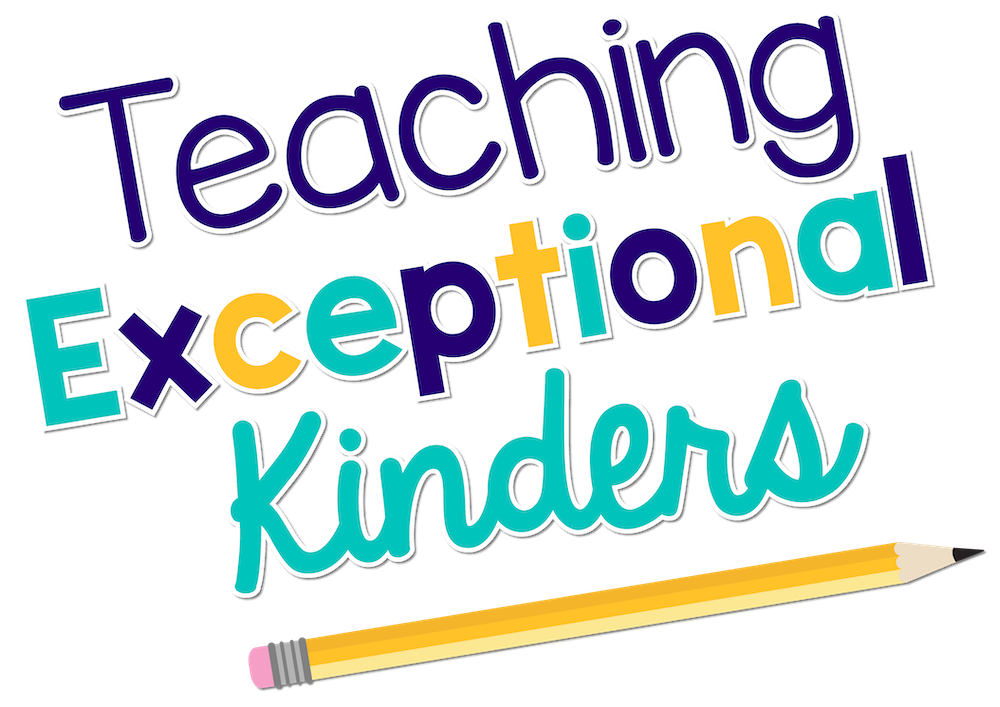Tips for Teaching Self-Regulation Skills in Kindergarten
As teachers, we know that understanding the “why” behind challenging behavior is an essential first step in addressing and improving it. Sometimes students exhibit negative behavior to seek attention, avoid a task, or be defiant. However, there is often a different factor involved: The student is experiencing a strong emotion. Whether they’re angry, excited, or frustrated, students might act out when they don’t have the tools they need to deal with these emotions at school. In this post, I’m going to share some helpful tips for teaching self-regulation skills in kindergarten.
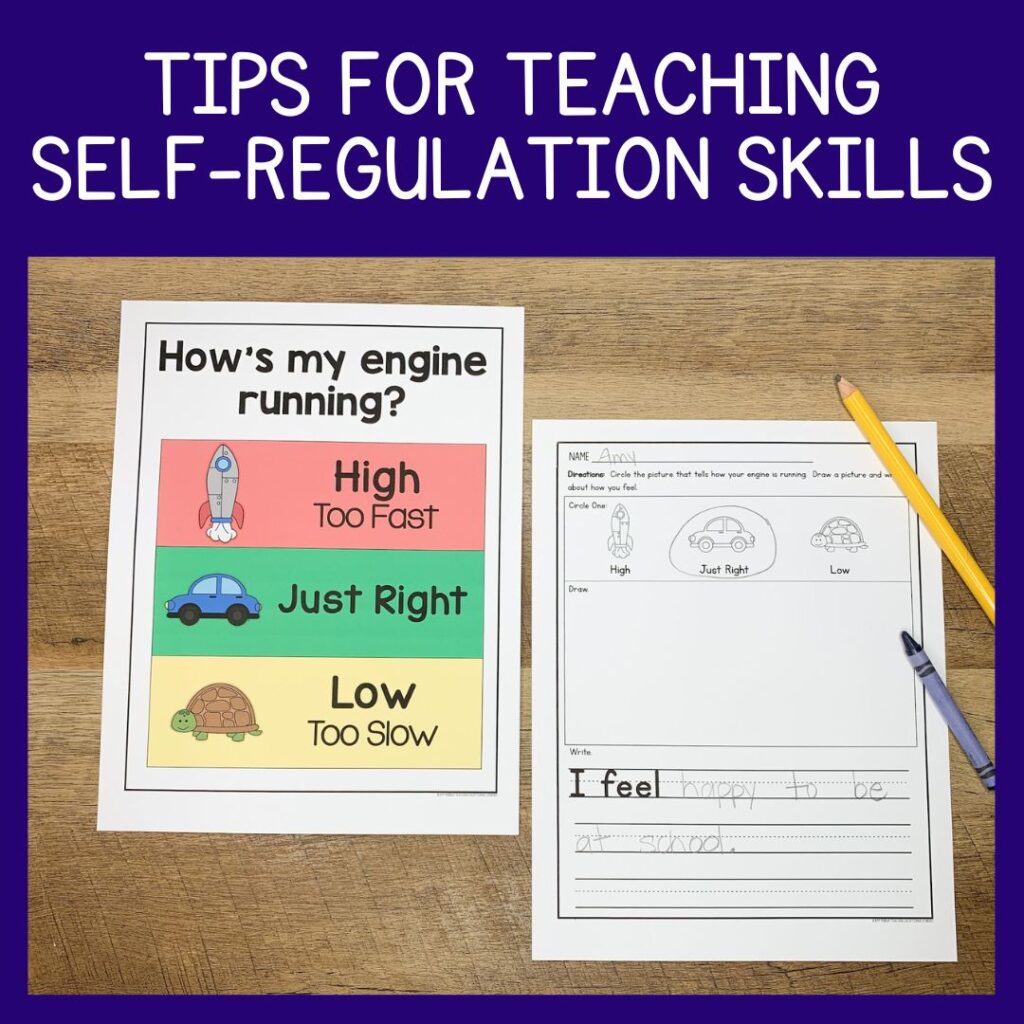
What Are Self-Regulation Skills?
When students are placed in challenging, frustrating, or exciting situations, they can experience strong emotions that impact them in many different ways. The severity and length of this impact will depend on a child’s ability to regulate these strong emotions independently. Students with sufficient self-regulation skills will recognize and respond to their emotions before they cause an extreme reaction. They know what they need to get themselves back on track.
Children who aren’t able to regulate their own emotions will have a much more difficult time responding to their emotions without intervention from an adult. In kindergarten, self-regulation difficulties can look like tantrums, conflict with peers, difficulty sitting still, or even elopement.
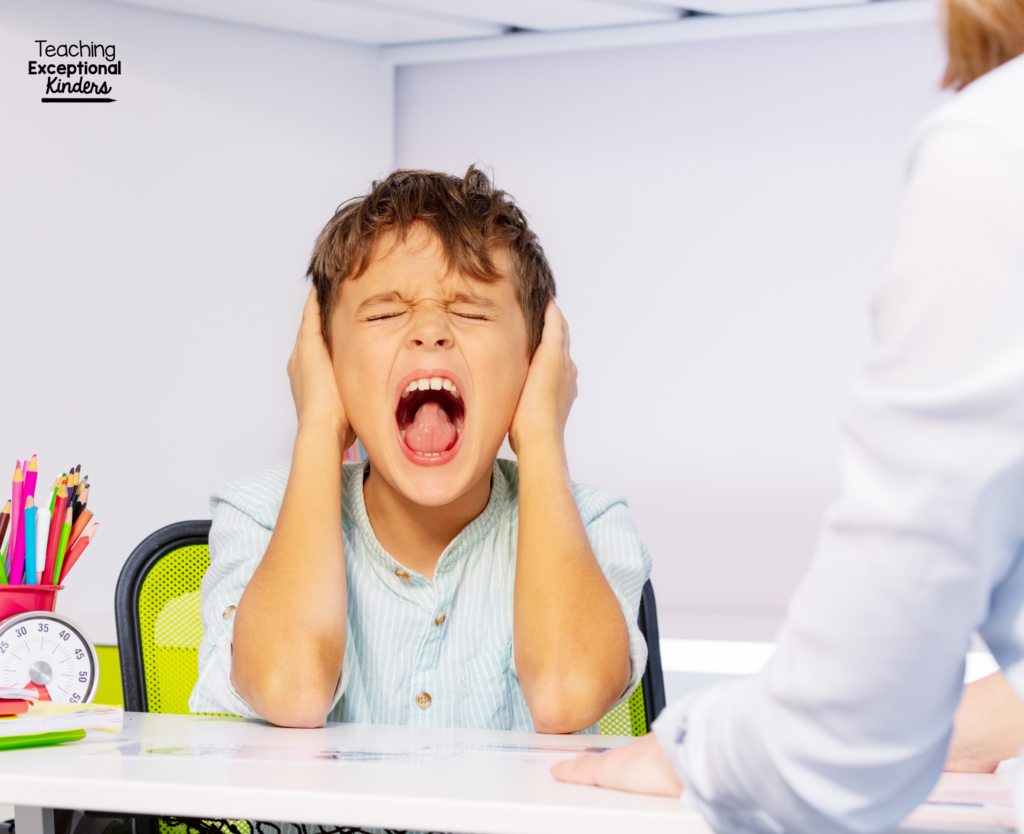
What Causes Self-Regulation Difficulties in Kindergarten?
When we think about self-regulation challenges, there are many contributing factors that might come to mind: Disability, trauma, life changes, etc. However, when it comes to self-regulation difficulties in kindergarten, the most common factor is much more simple: Age. Their brains are still developing and learning how to regulate their emotions independently!
How to Teach Self-Regulation Skills in Kindergarten
So what do you do with a room full of five and six-year-old children who are still developing the ability to respond to their own emotions? Teach them self-regulation skills! Here are five tips for doing just that:
1. Keep It Simple
Emotions and feelings can be complicated to identify so keeping things simple helps young students to begin to understand how to identify emotions and self-regulate. You can introduce the concept self-regulation to students using a kid-friendly analogy: Engines.
Just like an engine helps a car get from one place to another, our bodies help us do our jobs at school. When we experience a strong feeling, it might make our engine run too fast or too slow. This might make our bodies might feel more like a rocket ship or turtle, which we wouldn’t expect to see on a road made for cars. Sometimes strong emotions make it hard for our bodies to do what is expected at school. By responding to emotions, students can keep their engines running at a level that helps them succeed.
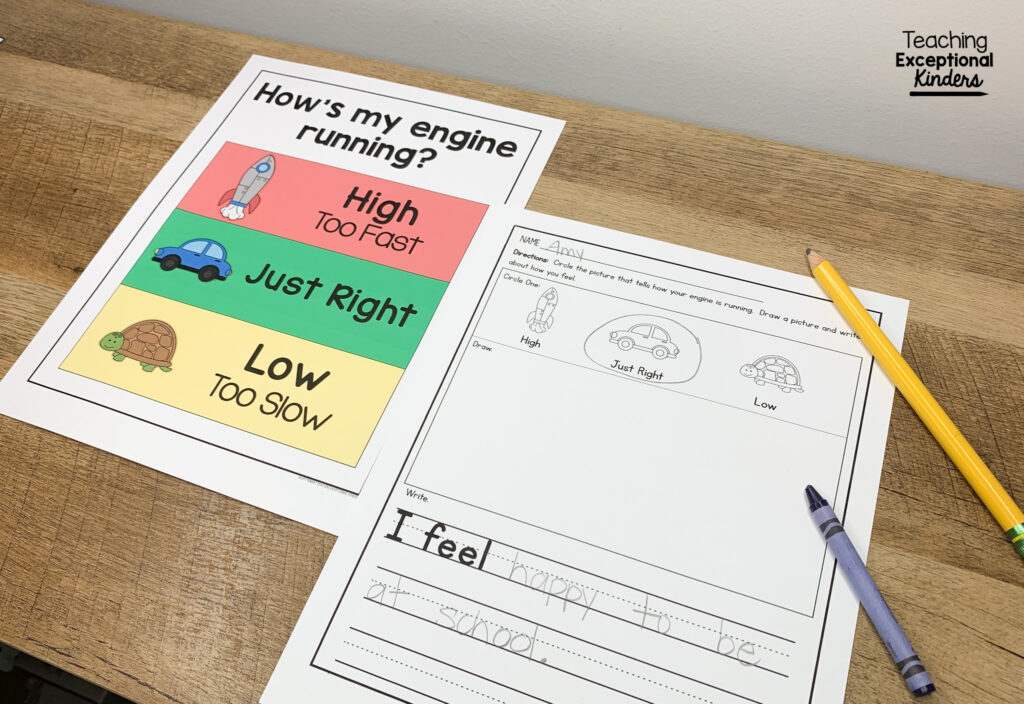
2. Use Visual Supports
Teaching self-regulation skills is an ongoing process. You will need to reference these concepts throughout the year! This is why it’s so helpful to use visual supports in the classroom. You can have a visual emotions chart to help students recognize how they’re feeling in a given moment. You can also display a visual chart that will help students check in with their own engine levels throughout the day.
3. Provide a Space for Processing Emotions
As children learn how to process and regulate their emotions, they might need to step away from their current environment in order to do so. They might even need additional tools to help them calm down when their engines are running too fast. It’s helpful to create a safe space in your classroom where students can take the time they need to compose themselves.
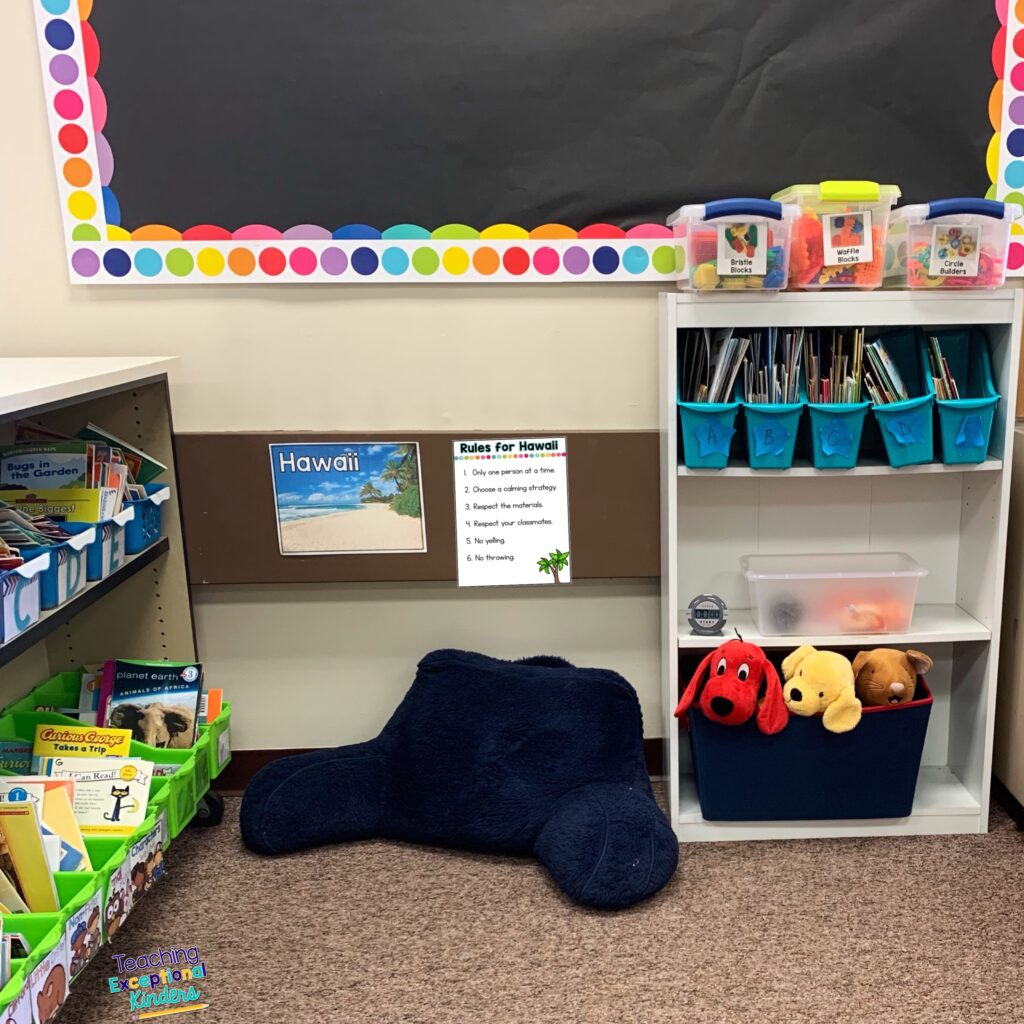
If you want some tips for creating a space like this, I have written a blog post with tips for setting up a calm-down corner that actually works!
4. Use Social Stories
Some students will need more frequent reminders about how to keep their engine running at a speed that is “just right” for school. Social stories can be a great tool! You can read these social stories with individual students, small groups, or even with your whole class, depending on how many students need the reminders. If you aren’t familiar with this strategy, be sure to check out my blog post about using social stories in kindergarten.
5. Model Self-Regulation
Finally, one of the best ways that you can teach self-regulation skills to your students is to model the process. I’m not just talking about a hypothetical demonstration when you’re teaching students about regulating emotions. I know it can be difficult, especially in moments when you’re feeling overstimulated or frustrated, but modeling in real time is a powerful teaching tool.

Getting ready to sit down for a read-aloud after recess, but you’re still processing a frustrating conversation you had in the staff room? You can explain to your students that your engine is still running a little bit too fast for read-aloud time and take a couple of deep breaths before starting. This shows students that it’s not “bad” when their engine is running too fast or too slow. It’s simply how their body is reacting to emotion and it’s something they can learn how to regulate on their own.
Printable Supports for Teaching Self-Regulation Skills
Would you like to give your students more tools for developing self-regulation and impulse control? I have created a printable resource with helpful self-regulation worksheets, tools, and visuals for your kindergarten classroom. These child-friendly tools can help young learners learn how to self-regulate their feelings and show self-control with behavior choices.
If you’d like to take a closer look at everything included in this resource, you can find it in the Teaching Exceptional Kinders shop or on TPT.
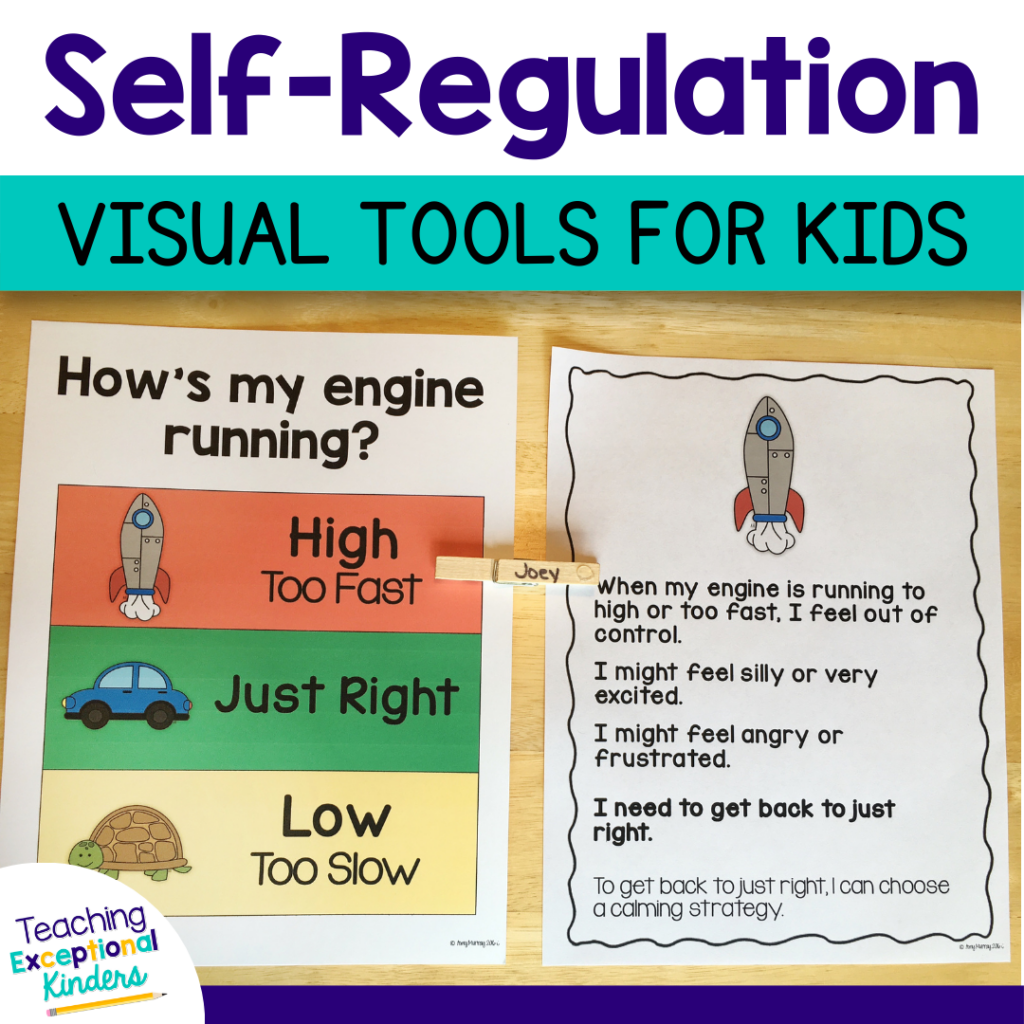
Save These Tips for Teaching Self-Regulation Skills in Kindergarten
If you’re short on time, be sure to save this post for later! Just add the pin below to your favorite teaching board on Pinterest. You’ll be able to quickly find this resource whenever you’re ready to download and print. Plus, saving this pin will make it easier for other busy teachers to find these tips for teaching self-regulation skills in kindergarten.
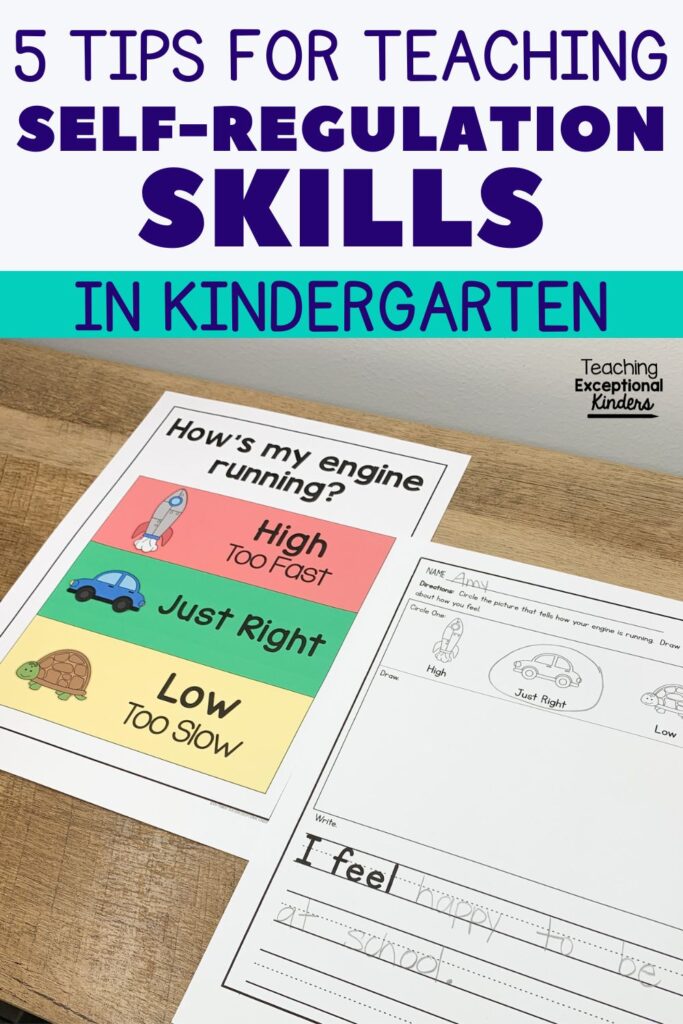
Amy
SITE DESIGN BY LAINE SUTHERLAND DESIGNS

